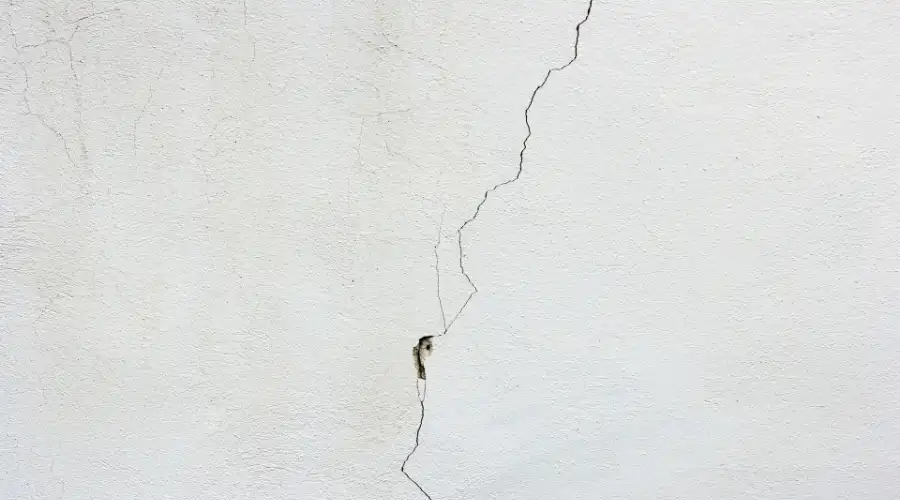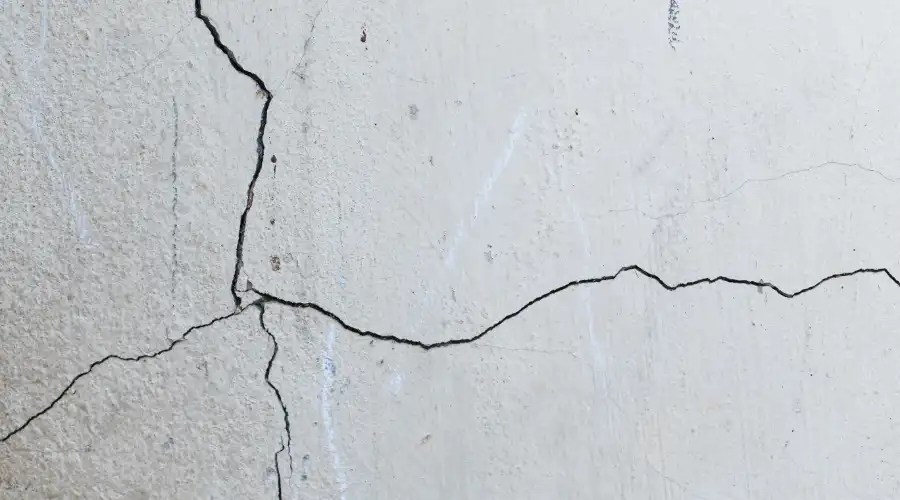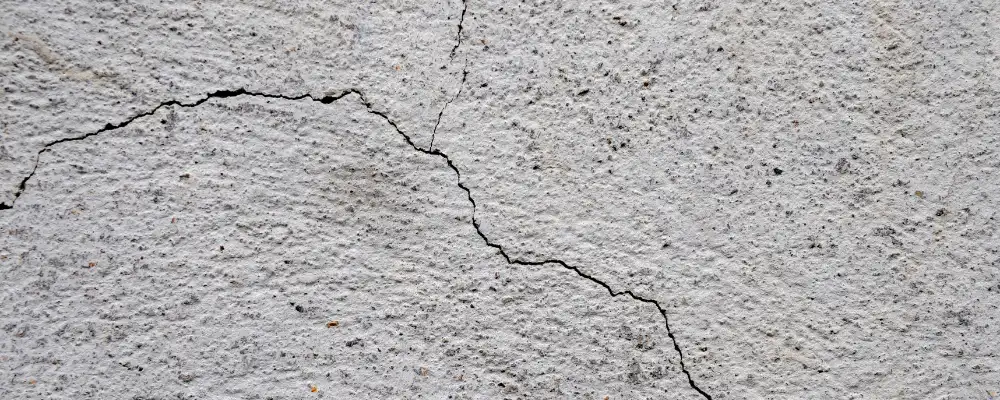Hairline cracks in concrete walls are a frequent issue experienced by owners and property managers. These fine cracks may appear to be mere nuisance cracks, but they can indicate internal stress or environmental effects, and will eventually lead to moisture intrusion if neglected, possibly even failure. For realtors and maintenance personnel, these types of cracks must be attended to as soon as possible if they plan to maintain the structural and market value of the property. To be effective property managers, understanding the source of the cracks, recognizing when to apply intervention, and applying the proper repair techniques will lead to favorable outcomes. This technical guide will walk users through the diagnostics, repairs, and prevention of hairline cracks.
What Are Hairline Cracks?

Hairline cracks are narrow cracks, usually <0.1mm wide, that occur on the surface or within the body of concrete. Hairline cracks are often difficult to see without close inspection and appear as continuous solid lines or in an irregular map pattern. Hairline cracks indicate the internal stresses the concrete has experienced, typically during or shortly after the curing process. These cracks are most often found at edges, corners, and at the maximum stress concentrations.
Causes of Hairline Cracks
From a technical standpoint, hairline cracks in concrete walls could possibly occur for a variety of reasons:
- Shrinkage Upon Cure: As concrete dries and cures, it shrinks and this can produce tensile stresses that will exceed the concrete’s early strength; thus allowing for cracks to develop.
- Improper water-cement ratio: Using too much water in the concrete mix can increase porosity and shrinkage, weakening the structure. On the other hand, too little water can cause dehydration, leading to inadequate hydration of the cement and eventual cracking. The specified water-cement ratio should not exceed 0.5.
- Temperature changes: Rapid or single extreme temperatures lead to the expansion and contraction of the concrete, causing cracks,, especially in the early stages of cure.
- Settlement: Differential settlement of the ground under the wall can cause stress concentrations that lead to cracking.
- Overloaded: Exceeding the intended load of the wall can create micro-cracking, which would manifest as hairline cracks.
- Improper curing practices: Lack of curing will allow for the rapid loss of moisture, thus leading to a lower strength development and increased chance of cracking.
- Excessive vibration or reworking: Excessive vibration during placement or excessive reworking of finishing can cause segregation and surface cracking.
- Plastic shrinkage and bleeding: Excessive water evaporation over the surface of the concrete or excessive surface water will cause the surface to weaken and increase the likelihood of cracking.
Signs That Hairline Cracks Need Attention
Although many hairline cracks are just cosmetic concerns, certain conditions indicate possible examination or professional help, including:
- Cracks that are Running or Lengthening Over Time: If there seems to be an ongoing change to the foundation, it appears there is structural movement or stress somewhere.
- Diagonal Cracks Radiating from Corners of Doors or Windows: This might indicate that there has been some settlement on the foundation or that some movement has occurred.
- Cracks near the Floor or Ceiling Line: In both locations, this could indicate pressure on the foundation or soil.
- Bulging or Displacing Parts of a Wall: This may be accompanied by comments of bulging or displacing and might indicate moisture issues or possibly serious structural issues.
- Recurring Cracks Appear After Repairs: If some of the cracks reappear after cosmetic repairs are completed, one needs to consider whether you are repairing the cosmetic appearance and have not addressed an underlying concern.
If any of these conditions are present, it would be advisable to have a professional structural assessment to possibly rule out underlying issues and concerns.
Step-by-Step Guide to Fix Hairline Cracks in Concrete Walls

Repairing hairline cracks early can prevent further damage and ensure a durable, aesthetically pleasing result. Follow these technical steps for effective repair:
Tools and Materials Required
- Concrete crack filler (epoxy, polyurethane, or flexible sealant)
- Wire brush or vacuum
- Caulking gun (for sealant application)
- Putty knife or trowel
- Protective gloves and eyewear
Repair Process
1. Clearing debris
Begin the repair process by cleaning the crack. Cleaning the crack removes debris and allows the repair to adhere to the crack., Use a wire brush to remove any loose debris and dust. If the contamination continues after brushing, washing the area with mild detergent, and water is recommended. Let the area dry completely before proceeding.
2. Crack preparation
Next, you can make the bond stronger between the repair compound and existing concrete by slightly widening the crack. Using a hammer and chisel widen the crack slightly and form a shallow “V” notch that runs the length of the crack, providing more surface areas for bonding to occur, and ensuring that the repair material can anchor itself in places.
3. Moistening the surface
Next, it is helpful to lightly moisten the prepared crack with clean water, being sure not to apply excess water that would allow pooling. Pre-wetting the concrete is beneficial because it prevents the concrete from pulling moisture out of the repair material, thereby preventing premature drying and reducing bond strength.
4. Application of Repair Material
- For tiny cracks, create a thick paste from Portland cement and water. Overtake the crack by screeding this grout straight down and filling the void entirely.
- For wider cracks, use flexible concrete caulking, such as Sikaflex®, with a caulking gun. Push the caulking deep into the crack and slightly overfill the crack to accommodate any shrinkage as it cures.
5. Finishing and Curing
Screed the repair surface flat using a putty knife or trowel and blend it into the wall surrounding it. Follow the manufacturer’s recommended curing times:
- Sealants: At least 24 to 48 hours to cure.
- Cementitious Grout: Curing might take 1 to 5 days, depending on the product specification and climate.
If curing takes longer, it is advisable to mist the area and cover it to prevent it from drying too quickly, which can cause other cracking or shrinkage.
6. The Last Step
Once the repair material is fully cured, sand the surface smooth to remove any irregularities to make it uniform. If you want, you could then paint the area repaired to match the rest of the wall, restoring structural integrity and aesthetics.
Prevention Methods for Hairline Cracks in Concrete Walls
Hairline cracks will occur in concrete walls. At best, you can address them as granular construction techniques:
- Adequate mix design: It involves creating controlled water-cement ratios (0.5 and lower) and using clean, well-graded aggregates, which can improve durability and reduce concrete shrinkage.
- Proper curing: Properly cure concrete for a minimum of sevens days, allowing the wall to get sufficient intensity before the opportunity of creating shrinkage cracks occurs.
- Temperature control: Place concrete when the temperature is moderate and the substrate is not too hot or frozen. If necessary, the temperature can be insulated or controlled.
- Proper placement and compaction: Use mechanical vibration, to a limit, to eliminate air pockets and densify the concrete effectively without segregating the paste.
- Properly designed expansion joints: Expansion joints are to be designed and installed based on what is expected to occur with thermal expansion and contraction, as a way to relieve stress and/or cracks from occurring.
- Regular Inspection/Maintenance: Make it a practice to carry out periodic maintenance, ideally every couple of years, with a thorough inspection at least once a year. Taking timely action on minor cracks helps prevent them from spreading and ensures the wall remains structurally sound..
Conclusion
Although small, hairline cracks in the concrete wall can sometimes be the first sign(s) of stress or environmental influence. Proper analysis, a good repair technique, and future plans for prevention could help to maintain a concrete’s structural integrity and aesthetic purposes. Using best practices in construction and general maintenance, homeowners and property owners can help to solidify the value and safety of their concrete.
Frequently Asked Questions
Most hairline cracks are not structurally significant but should be monitored. If they widen, lengthen, or appear with other signs of distress, professional assessment is recommended.
While some cracking is inevitable due to the nature of concrete, proper mix design, curing, and maintenance can minimize its occurrence and severity.
For very fine cracks, a cementitious grout is suitable. For slightly wider cracks, epoxy or flexible polyurethane sealants provide durable repairs.
Hairline cracks can develop within hours to days after placement, especially during the curing process or with rapid moisture loss.
Minor, stable cracks can be repaired as a DIY project. However, if cracks are growing, accompanied by displacement, or recur after repair, consult a structural engineer

